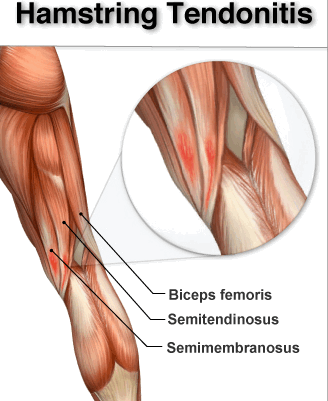BIOMECHANICS OF THE HAMSTRING MUSCLES
The main role of the hamstring muscles is knee flexion, or simply bending the knee. However, it is important to recognize that because these muscles attach on both the medial (inside) and lateral (outside) aspects of the knee joint, pure knee flexion requires activity of both the medial and lateral muscle mass. This means that 3 muscles (outside hamstring has to tendons) will need to work in congruence. Contraction of only the medial hamstrings produces knee flexion with medial rotation of the knee. While contraction of only the lateral muscle mass produces knee flexion with lateral rotation of the knee joint.
In addition to flexing and rotating the knee, the hamstrings reportedly contribute to the stability of the knee. The hamstrings provide active resistance to anterior glide of the tibia on the femur. Thus they are described as important adjuncts to the anterior cruciate ligament and perhaps a critical substitute in the ACL- deficient knee. There is considerable evidence from cadaver studies indicating that the hamstring muscles decrease the strain on the ACL. There also is evidence that individual with ACL insufficiencies increase the activity of their hamstring muscles in some activities such as hill climbing.
The hamstrings muscle also play an essential role in extension of the hip. EMG data reveals that the hamstring muscles are active in hip extension even when the knee is flexed. EMG evidence also suggests that the hamstring muscles can contribute to adduction of the hip (bringing the leg toward the midline of one’s body). The biceps femoris longus demonstrates activity during lateral rotation of the hip.3
The hamstrings are active during normal locomotion. The most prominent period of activity is at the transition between the swing and stance periods of the gait cycle. The role of this activity is to slow the extension of the knee in late swing and to help extend the hip in the stance phase.
More to come on hamstring muscles function, tightness, weakness, and effective ways to lengthen them next week.

